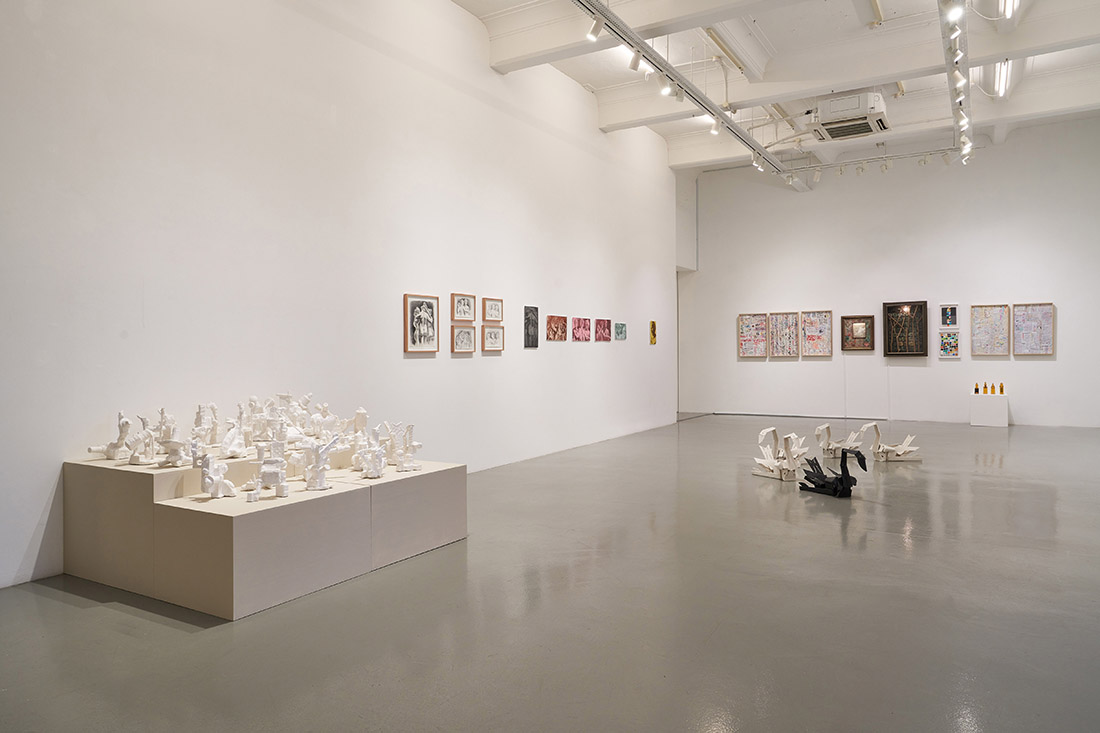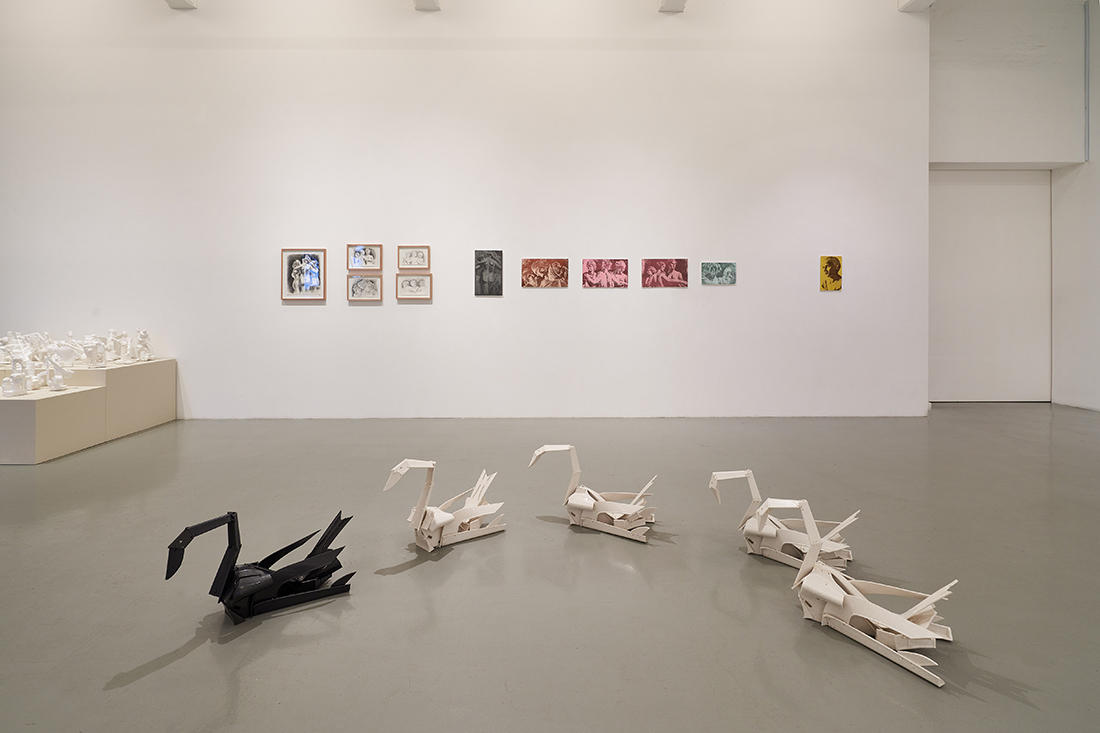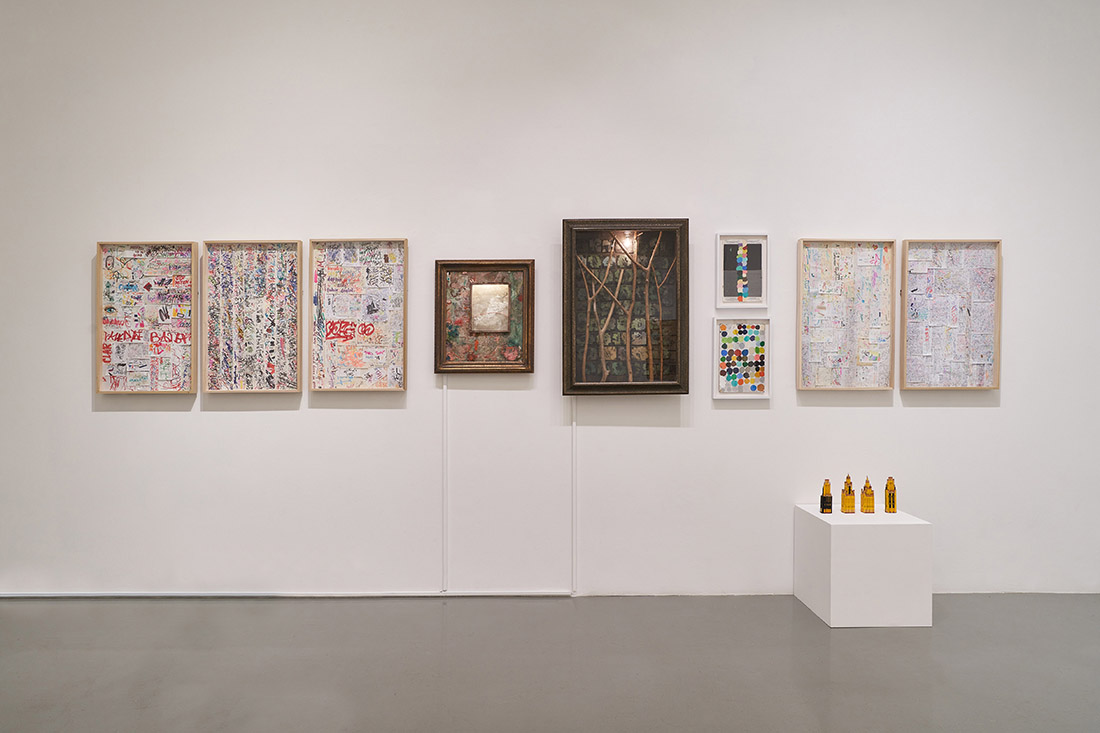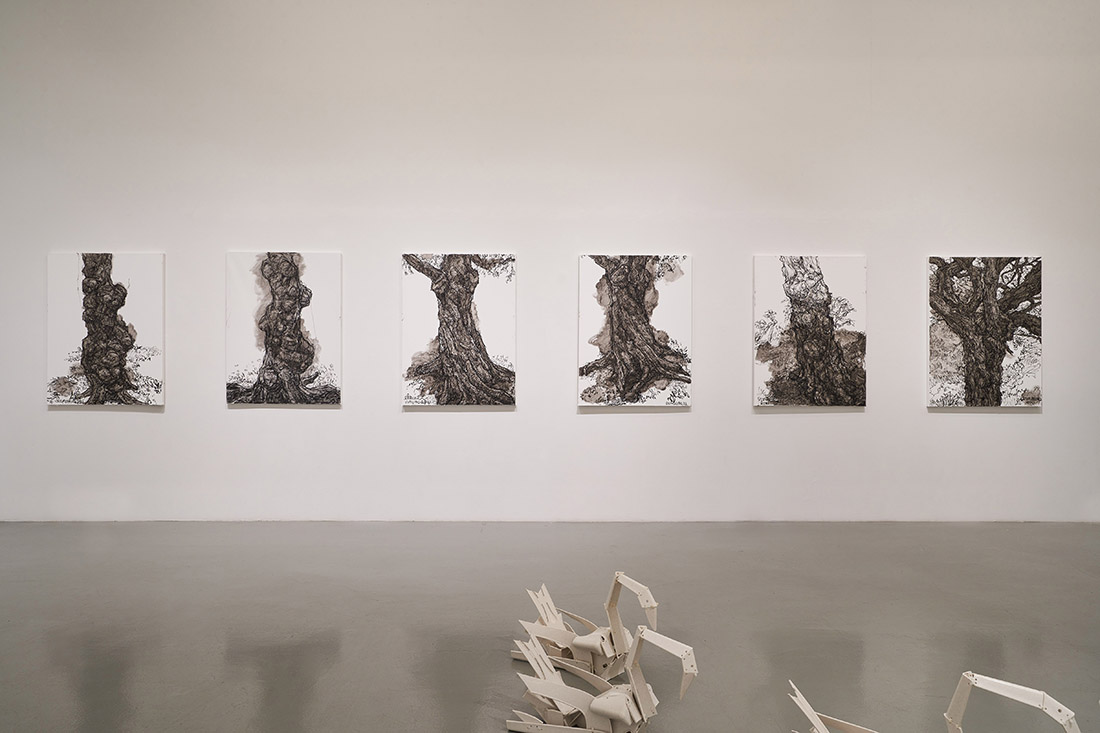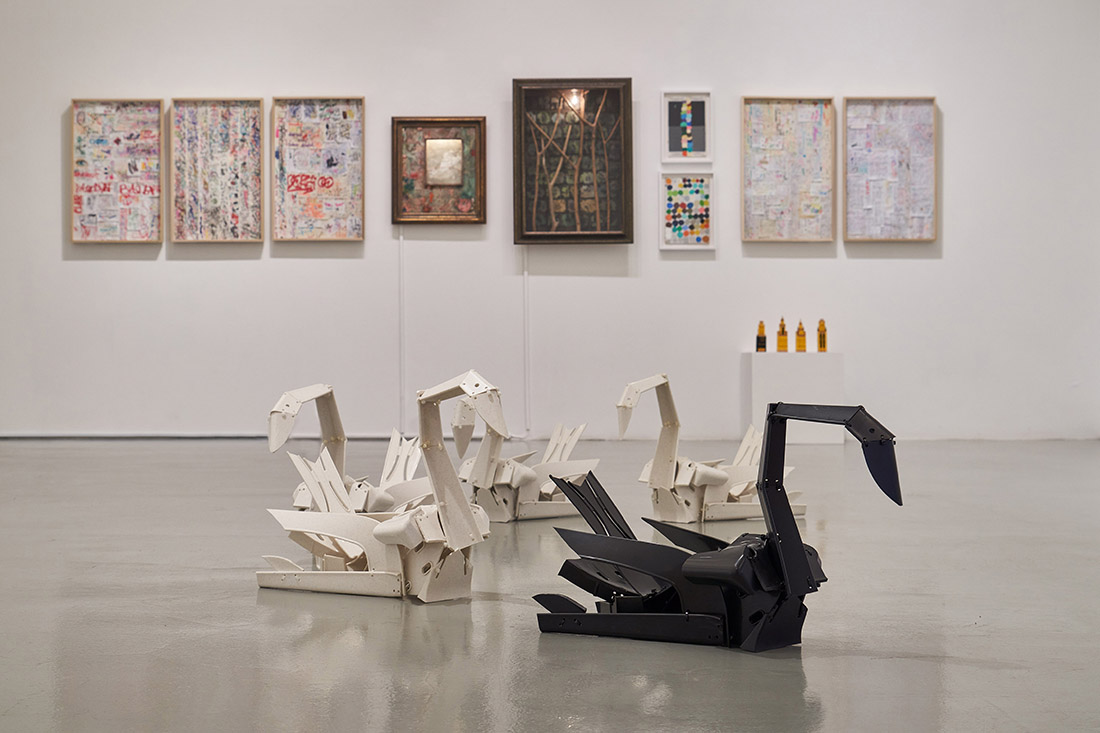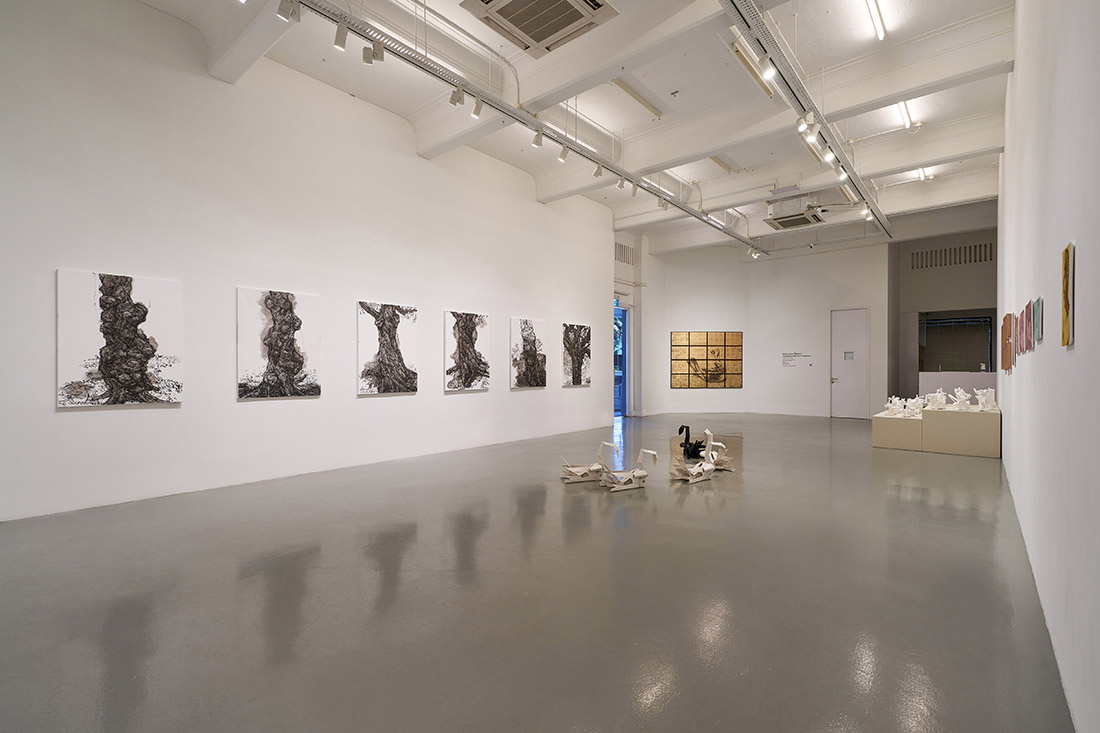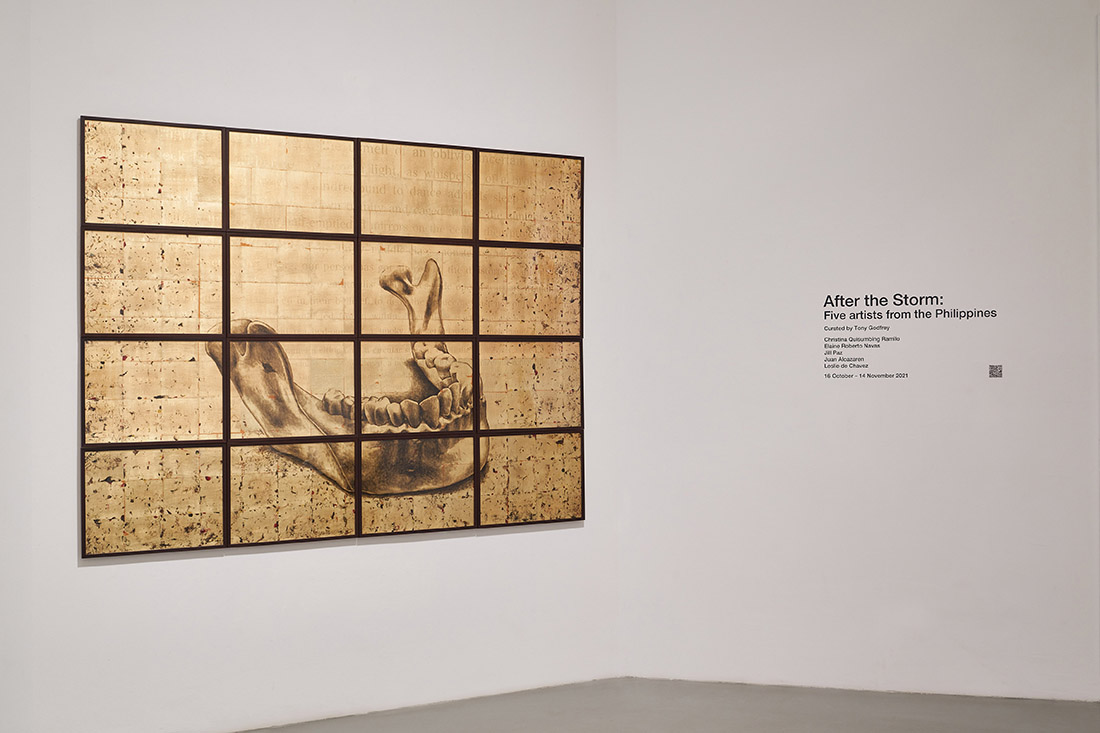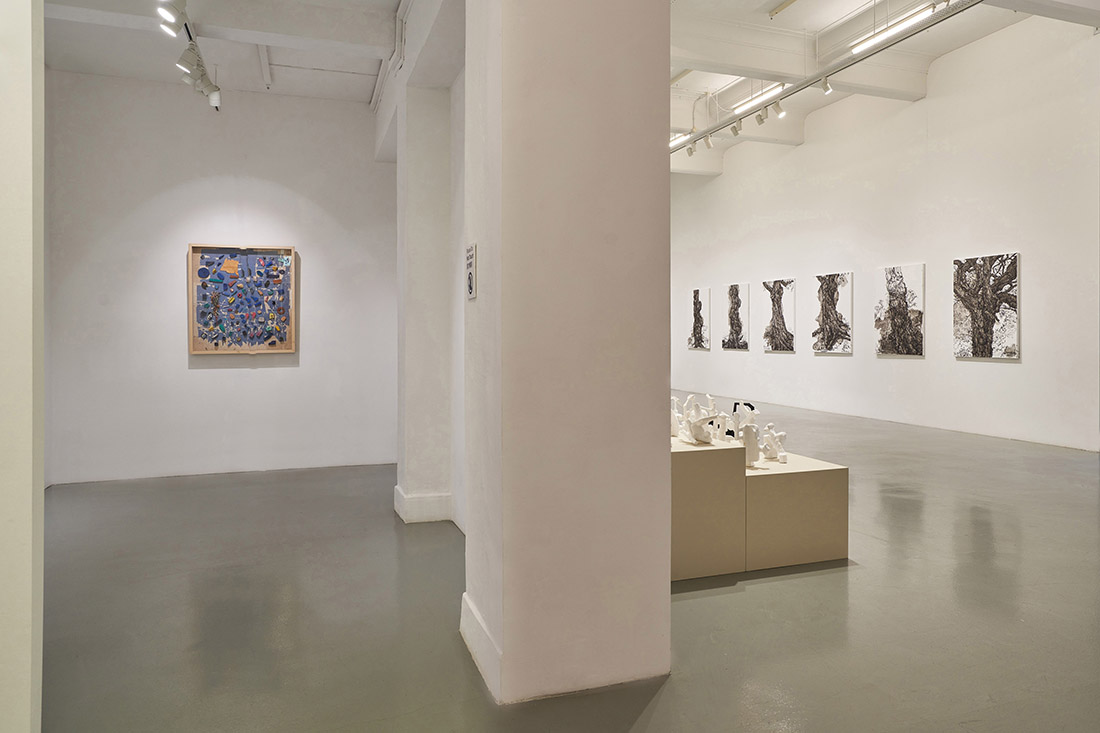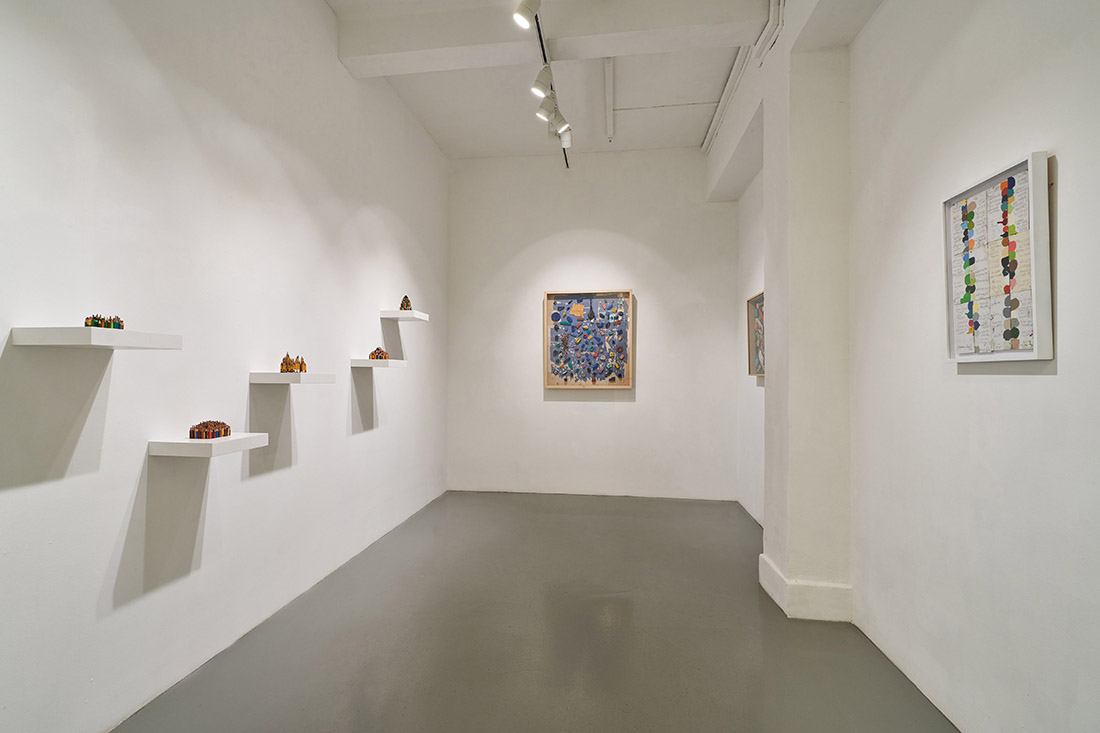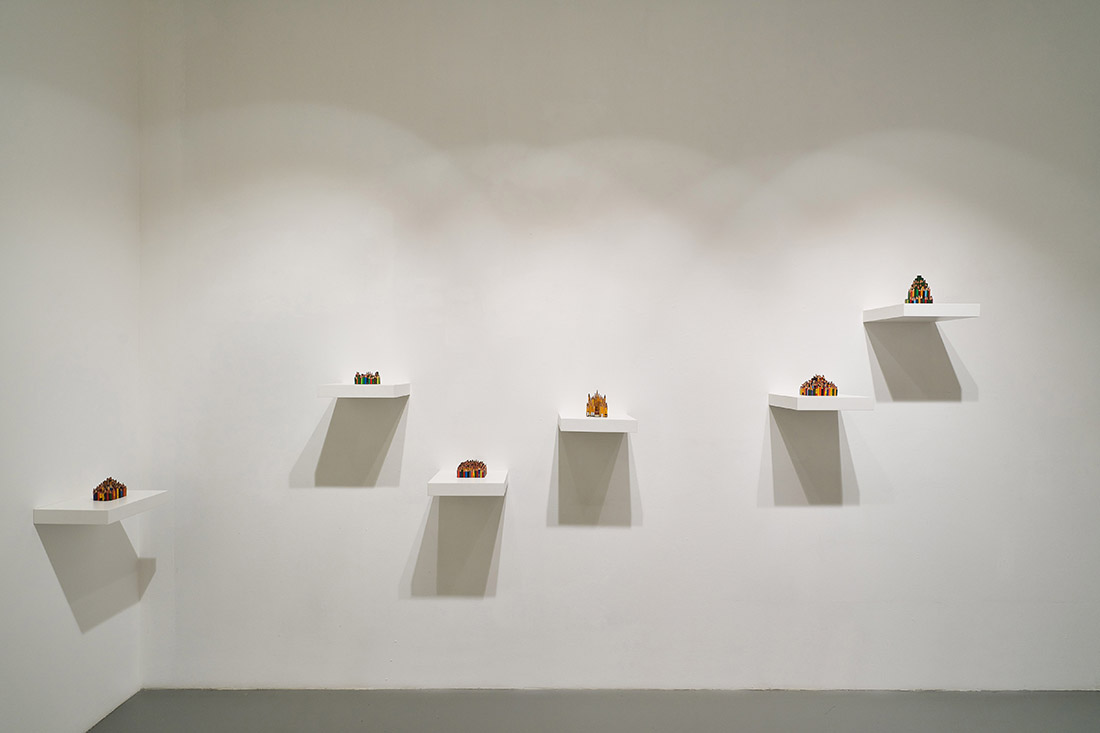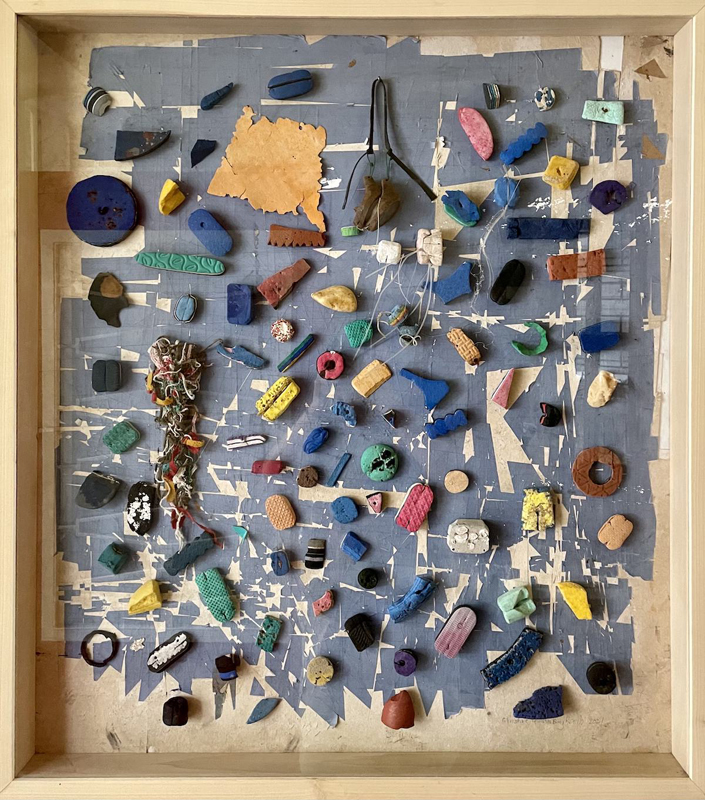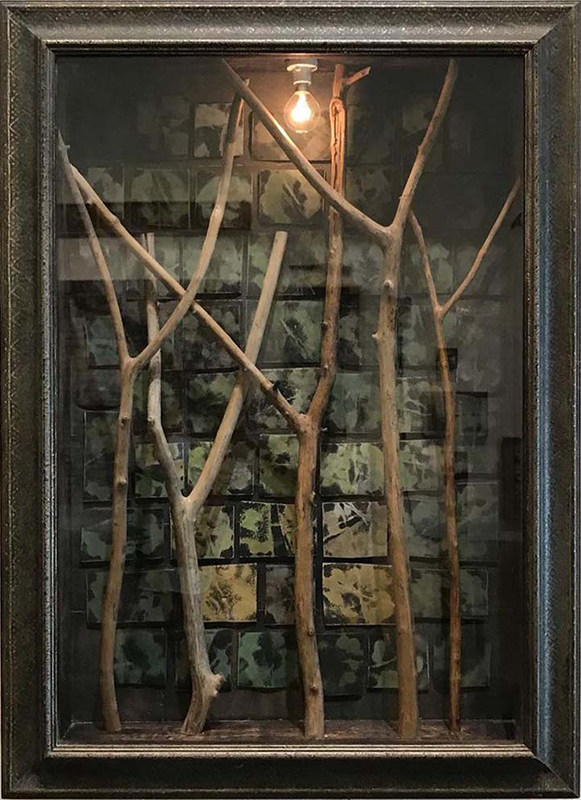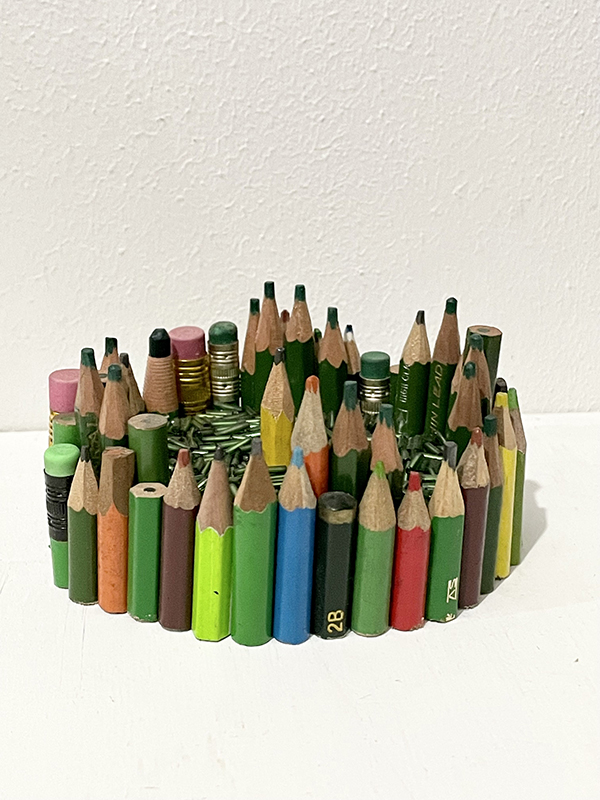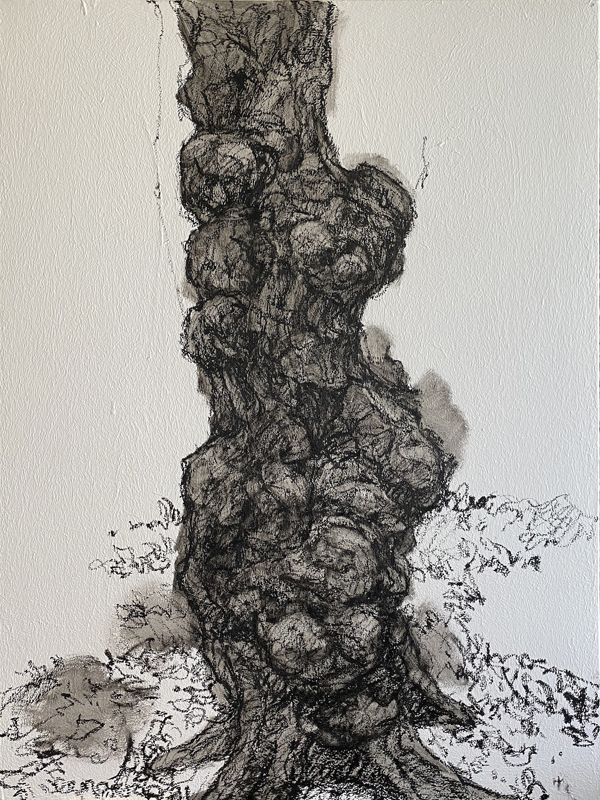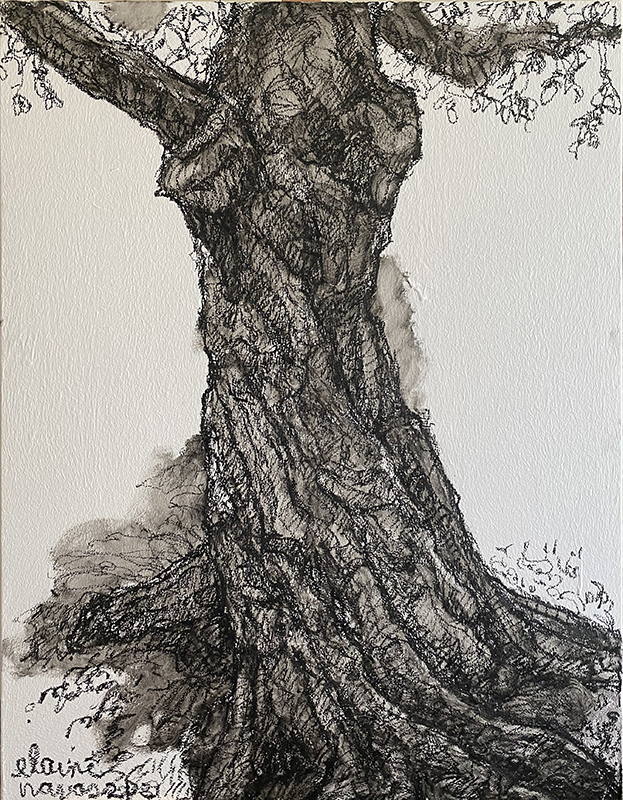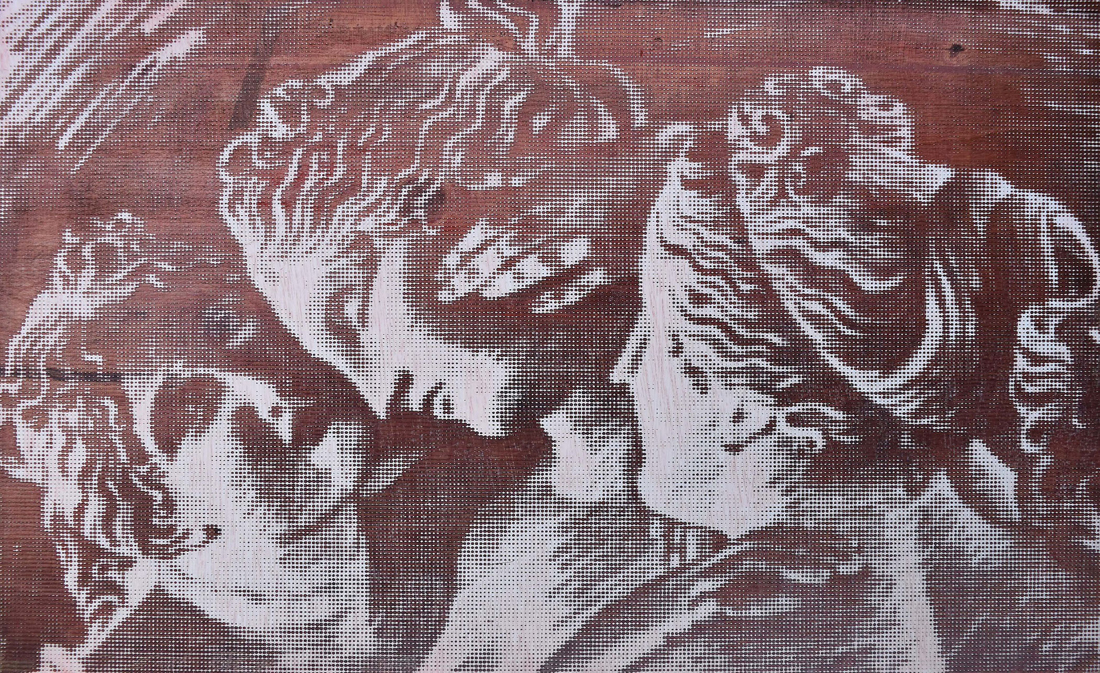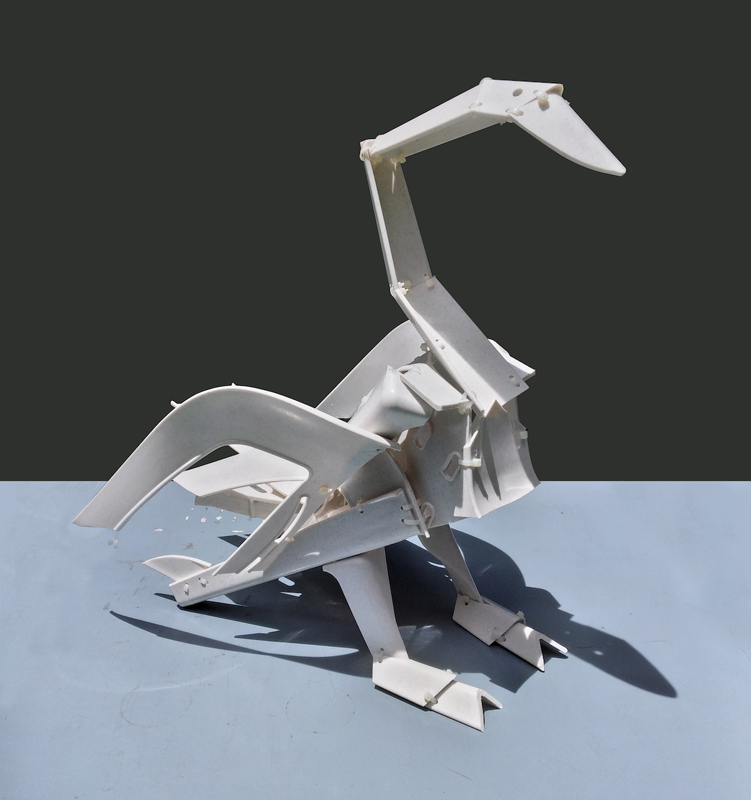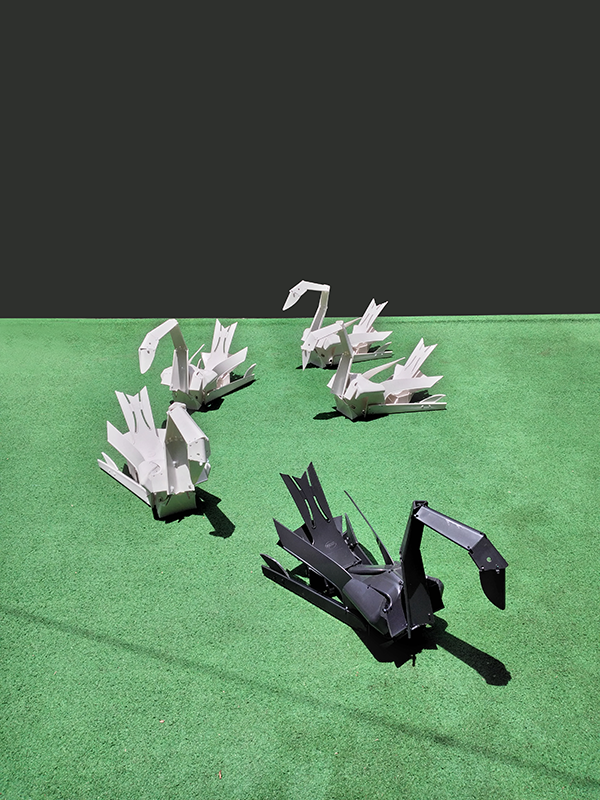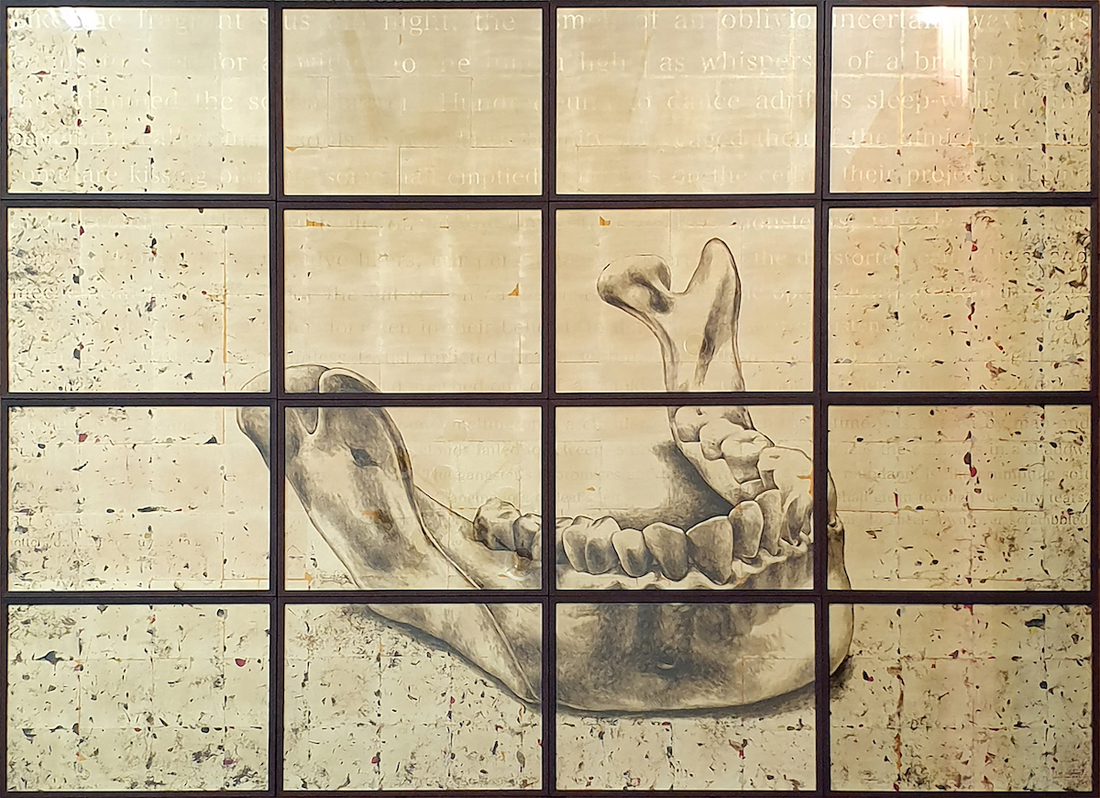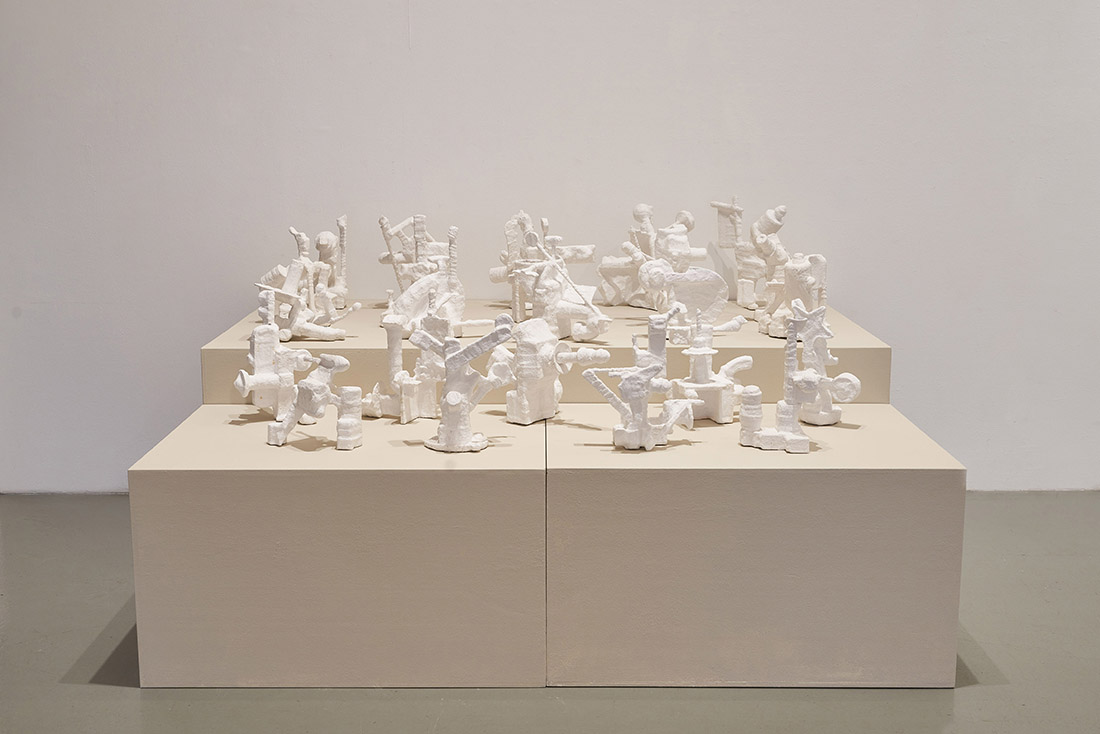Christina Quisumbing Ramilo, Elaine Roberto Navas, Jill Paz, Juan Alcazaren, Leslie de Chavez "After the Storm: Five artists from the Philippines"
2021年10月16日(土) - 11月14日(日)
Mizuma Gallery is pleased to present After the Storm: Five artists from the Philippines.
The title of this exhibition, chosen by curator Tony Godfrey back in April, has proved to be unduly optimistic: the storm, that is to say the pandemic, has never blown stronger in the Philippines than now. By August, Manila had gone back into lockdown. The Delta variant spreads inexorably. The hospitals are overflowing, the medical staff exhausted and disillusioned. Despite almost everyone wearing masks in public, plus face-shields in shops and enclosed spaces, the scarcity of vaccines has left the population vulnerable. With the developing nations hogging the vaccines, barely twenty percent of adult Filipinos have managed to get vaccinated.
This isn’t however an exhibition about Covid-19, but about how artists survived, and are surviving the pandemic. In April, the curator asked the five artists in this exhibition these questions: “What work will we make now for after the pandemic? Has the pandemic just meant a nice quiet time in the studio or some angst? Will we just carry on as we did before, or is there some change that the events of the last year and the current situation will make us take?”
Their unspoken response was to make new work for this exhibition. The artists have never stopped working: some found that they could spend longer in the studio, as suddenly there were no distractions or social obligations they had to attend to. Others could not get to their studio and had to work in their kitchen. Not surprisingly all but one of the artists have included drawings or paper works in this show. Perhaps, above all, work made during the pandemic is marked by intimacy and thoughtfulness.
And, as always, by the famed ability of the Filipinos to improvise and get by in an emergency. An ingenuity and elegance typified by the sculptures made by Juan Alcazaren: six swans each made out of a cut up plastic chair. Or by the collages of scribbles, old pencils or beach detritus gathered and composed by Christina Quisumbing Ramilo. Then, of course, there are the exceptional technical skills and sophistication of Filipino artists: witness the eloquent drawings of Elaine Roberto Navas. Thirdly, as we have come to expect from recent Filipino art, its wit and conceptual savviness, as we can see by the homely but enigmatic sculptures of Leslie de Chavez and the meditations on Classical sculpture by Jill Paz.
Above all there are individual voices, five of them here. In the time of lockdowns and travel bans, cut off from the rest of the world save by Zoom and Instagram — and in the case of Singapore based Navas her homeland — strength of character, pertinacity, and eloquence matter most.
After the Storm: Five artists from the Philippines, a group exhibition curated by Tony Godfrey featuring Christina Quisumbing Ramilo, Elaine Roberto Navas, Jill Paz, Juan Alcazaren, and Leslie de Chavez will run from 16 October to 14 November 2021. A digital publication with interviews with the artists will be available.
About the Curator
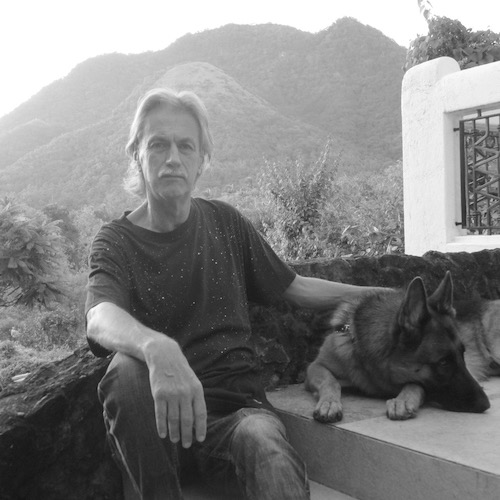 Tony Godfrey has been writing and lecturing about contemporary art since 1978. His books have included Conceptual Art (1998) and Painting Today (2009) – both published by Phaidon press. He left London for Singapore in 2009 where he led the MA in Contemporary art at Sotheby’s Institute, then worked as the curator at Equator Art Projects, Gillman Barracks. He now lives in the Philippines. His most recent books are Ding Yi (2020) published by Lund Humphries, and The Story of Contemporary Art (2020) published by Thames and Hudson and MIT. Yet to be published is Far Away but Strangely Familiar: Twenty-three Artists from the Philippines.
Tony Godfrey has been writing and lecturing about contemporary art since 1978. His books have included Conceptual Art (1998) and Painting Today (2009) – both published by Phaidon press. He left London for Singapore in 2009 where he led the MA in Contemporary art at Sotheby’s Institute, then worked as the curator at Equator Art Projects, Gillman Barracks. He now lives in the Philippines. His most recent books are Ding Yi (2020) published by Lund Humphries, and The Story of Contemporary Art (2020) published by Thames and Hudson and MIT. Yet to be published is Far Away but Strangely Familiar: Twenty-three Artists from the Philippines.
About the Artists
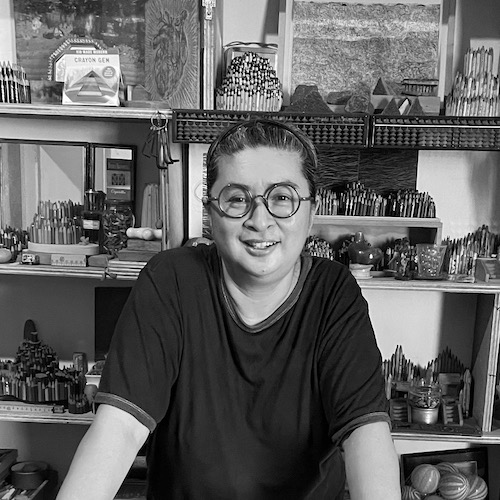 Christina Quisumbing Ramilo (b. 1961 in Manila, Philippines) examines and reimagines objects and their contexts through comprehension of material. Her artistic practice involves an interest in and respect for the life and history of objects. With minimal intervention on their surfaces, she arranges them or reconfigures their parts, presenting other perspectives to their forms and functions. Often using unconventional materials (construction discards, architectural fragments, casts, recycled paper), and utilizing objects themselves as material (mirrors, bottles, old frames, clothing), most of which have been collected for years, she constructs the works in parts over long periods of time, never completely finished. Conferred with titles that employ wit and humor, they ultimately express her personal poetries. A graduate of the University of the Philippines, Bachelor of Fine Arts 1985, and of New York University with a Master’s Degree in Studio Arts and Art Education in 1988, Ramilo lives and works in Manila, Philippines.
Christina Quisumbing Ramilo (b. 1961 in Manila, Philippines) examines and reimagines objects and their contexts through comprehension of material. Her artistic practice involves an interest in and respect for the life and history of objects. With minimal intervention on their surfaces, she arranges them or reconfigures their parts, presenting other perspectives to their forms and functions. Often using unconventional materials (construction discards, architectural fragments, casts, recycled paper), and utilizing objects themselves as material (mirrors, bottles, old frames, clothing), most of which have been collected for years, she constructs the works in parts over long periods of time, never completely finished. Conferred with titles that employ wit and humor, they ultimately express her personal poetries. A graduate of the University of the Philippines, Bachelor of Fine Arts 1985, and of New York University with a Master’s Degree in Studio Arts and Art Education in 1988, Ramilo lives and works in Manila, Philippines.
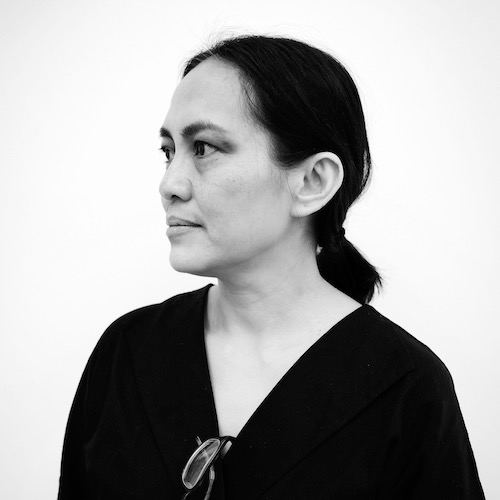 Elaine Roberto Navas (b. 1964 in Manila, Philippines) graduated with Bachelor of Arts in Psychology from the Ateneo de Manila University in 1985 prior to entering University of the Philippines College of Fine Arts, graduating with a Bachelor of Fine Arts majoring in Painting in 1991. In University of the Philippines (UP), Navas learned under the tutelage of her mentor, Roberto Chabet, who would later curate several of her exhibitions, including her first solo exhibition at the Ayala Museum in 1997. Since then, she has been exhibiting her works in solo and group exhibitions in the Philippines and in Singapore. Some of her major exhibitions include We Cannot Step Twice Into The Same River at Fost Gallery, Singapore (2020), Pauses of Possibilities in Lopez Museum, Philippines (2017) and What does it all matter, as long as the wounds fit the arrows?, a tribute to Roberto Chabet at the Cultural Center of the Philippines (2014). Elaine Roberto Navas lives and works in Singapore, where she has resided with her family since 1998.
Elaine Roberto Navas (b. 1964 in Manila, Philippines) graduated with Bachelor of Arts in Psychology from the Ateneo de Manila University in 1985 prior to entering University of the Philippines College of Fine Arts, graduating with a Bachelor of Fine Arts majoring in Painting in 1991. In University of the Philippines (UP), Navas learned under the tutelage of her mentor, Roberto Chabet, who would later curate several of her exhibitions, including her first solo exhibition at the Ayala Museum in 1997. Since then, she has been exhibiting her works in solo and group exhibitions in the Philippines and in Singapore. Some of her major exhibitions include We Cannot Step Twice Into The Same River at Fost Gallery, Singapore (2020), Pauses of Possibilities in Lopez Museum, Philippines (2017) and What does it all matter, as long as the wounds fit the arrows?, a tribute to Roberto Chabet at the Cultural Center of the Philippines (2014). Elaine Roberto Navas lives and works in Singapore, where she has resided with her family since 1998.
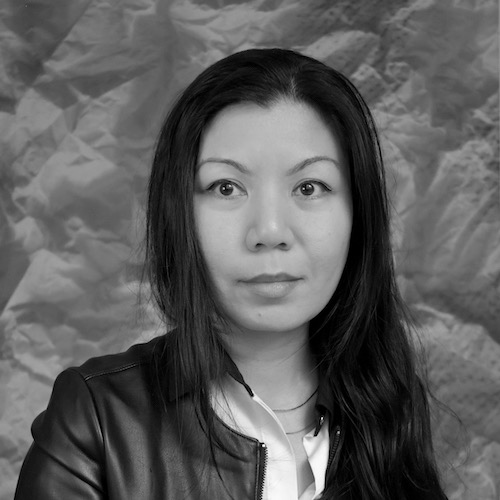 Filipino-Canadian Jill Paz (b. 1982 in Manila, Philippines) emigrated to North America in the early eighties and in 2017, returned to Manila where she now lives and works. As such Paz is informed by her experience as an immigrant, and her artworks are suffused with the lyrical tone of diasporic intimacy. Her emphatically process-oriented approach to painting combines analog and digital techniques to create intricate approximations that explore themes of repair and preservation. Paz graduated with a MFA and BFA at the Columbus College of Art and Design, USA; studied Art History at the University of British Columbia, Canada; and attended a studio program at Parsons The New School for Design, New York, USA. Paz has attended artist residencies at Banff Centre for Arts and Creativity, Canada; Centre Intermondes, La Rochelle, France; and Mildred’s Lane, Narrowsburg, New York, USA. She was the recipient of the 2016 Visual Arts Fellowship for the Columbus Museum of Art and Saxony State Ministry and subsequently attended a residency at GEH8, Dresden, Germany. Paz’s works are in the collection of Mori Art Museum, Tokyo, Japan, and private collections internationally.
Filipino-Canadian Jill Paz (b. 1982 in Manila, Philippines) emigrated to North America in the early eighties and in 2017, returned to Manila where she now lives and works. As such Paz is informed by her experience as an immigrant, and her artworks are suffused with the lyrical tone of diasporic intimacy. Her emphatically process-oriented approach to painting combines analog and digital techniques to create intricate approximations that explore themes of repair and preservation. Paz graduated with a MFA and BFA at the Columbus College of Art and Design, USA; studied Art History at the University of British Columbia, Canada; and attended a studio program at Parsons The New School for Design, New York, USA. Paz has attended artist residencies at Banff Centre for Arts and Creativity, Canada; Centre Intermondes, La Rochelle, France; and Mildred’s Lane, Narrowsburg, New York, USA. She was the recipient of the 2016 Visual Arts Fellowship for the Columbus Museum of Art and Saxony State Ministry and subsequently attended a residency at GEH8, Dresden, Germany. Paz’s works are in the collection of Mori Art Museum, Tokyo, Japan, and private collections internationally.
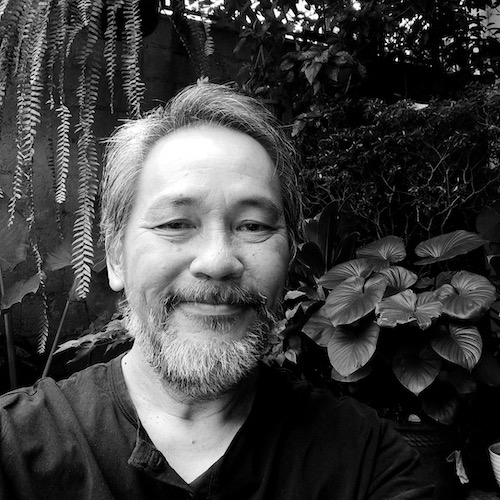 Juan Alcazaren (b. 1960 in Manila, Philippines) challenges preconceived traditional definitions of “sculpture” by working with a wide variety of materials ranging from old toys to household and industrial flotsam and jetsam. He coaxes the ephemeral and overlooked into the world of the permanent and covetable by giving them unexpected form, combining a bricoleur’s obsessiveness with a steel welder’s resoluteness, often manufacturing profundity by incorporating text in his work. Alcazaren is also an animator working mostly in stop-motion animation. He and his siblings were pioneers of this technique in the Philippines in the ’80s and have won multiple awards for their work. Alcazaren was conferred the CCP Thirteen Artists Award in 2000. He continues to actively exhibit in major local and regional galleries. Notably, he was part of the Chabet 50 years tribute exhibitions in 2104 and Filipiniana at the Centro Conde Duque in Madrid, Spain (2006). In 2017, Alcazaren was commissioned to create a permanent installation at the Areté in Ateneo de Manila University, Quezon City, Philippines (2017). Juan Alcazaren has a Bachelor’s Degree in Landscape Architecture and studied sculpture at the University of the Philippines, where he also was a lecturer in 1995 at the College of Fine Arts. He lives and works in Pasig City, Philippines.
Juan Alcazaren (b. 1960 in Manila, Philippines) challenges preconceived traditional definitions of “sculpture” by working with a wide variety of materials ranging from old toys to household and industrial flotsam and jetsam. He coaxes the ephemeral and overlooked into the world of the permanent and covetable by giving them unexpected form, combining a bricoleur’s obsessiveness with a steel welder’s resoluteness, often manufacturing profundity by incorporating text in his work. Alcazaren is also an animator working mostly in stop-motion animation. He and his siblings were pioneers of this technique in the Philippines in the ’80s and have won multiple awards for their work. Alcazaren was conferred the CCP Thirteen Artists Award in 2000. He continues to actively exhibit in major local and regional galleries. Notably, he was part of the Chabet 50 years tribute exhibitions in 2104 and Filipiniana at the Centro Conde Duque in Madrid, Spain (2006). In 2017, Alcazaren was commissioned to create a permanent installation at the Areté in Ateneo de Manila University, Quezon City, Philippines (2017). Juan Alcazaren has a Bachelor’s Degree in Landscape Architecture and studied sculpture at the University of the Philippines, where he also was a lecturer in 1995 at the College of Fine Arts. He lives and works in Pasig City, Philippines.
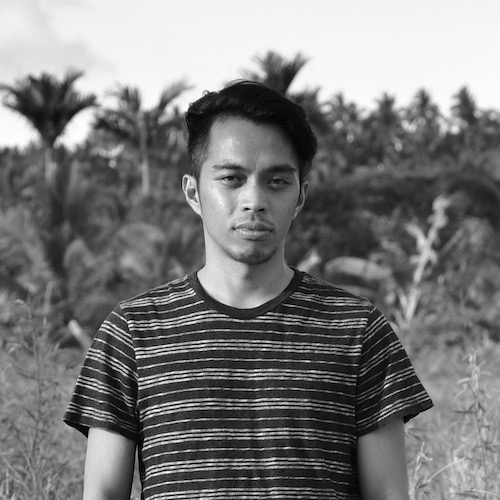 Leslie de Chavez (b. 1978 in Manila, Philippines) has been widely recognized for his incisive and sensible forays into history, cultural imperialism, religion, and contemporary life. Responding to urgent material conditions through his deconstructions of master texts, icons, and the symbols of his times, de Chavez strikes a balance between iconoclasm and an affirmative outlook to the relevance and accountability of art to one’s milieu. Leslie de Chavez has held several solo exhibitions in the Philippines, China, Korea, Singapore, UK, and Switzerland. He has also participated in several notable exhibitions and art festivals, which include London Biennale: Masks, Mirages and the Morphic Mirror, New York, London, Berlin, Lucban (2020); Far Away But Strangely Familiar, Danubiana Meulensteen Art Museum, Slovakia (2019); The Vexed Contemporary, Museum of Contemporary Art and Design, La Salle St. Benilde, Manila, Philippines (2015), Singapore Biennale 2013 (2013), 3rd Asian Art Biennale in Taiwan (2011), 3rd Nanjing Triennial in China (2008), and First Pocheon Asia Biennale in South Korea (2007). His most recent solo exhibitions include A Lonely Picket in the Balcony at Silverlens Galleries, Manila, Philippines (2021); The Allegory of the Cave at Arario Gallery, Shanghai, China (2018); and Higa sa Hangin (Lying Down in Air) at Finale Art File, Manila, Philippines (2018). A two-time awardee (2010/2014) of the Ateneo Art Awards for Visual Art, Leslie de Chavez is also the director/founder of the artist-run initiative Project Space Pilipinas, in Lucban, Quezon, Philippines.
Leslie de Chavez (b. 1978 in Manila, Philippines) has been widely recognized for his incisive and sensible forays into history, cultural imperialism, religion, and contemporary life. Responding to urgent material conditions through his deconstructions of master texts, icons, and the symbols of his times, de Chavez strikes a balance between iconoclasm and an affirmative outlook to the relevance and accountability of art to one’s milieu. Leslie de Chavez has held several solo exhibitions in the Philippines, China, Korea, Singapore, UK, and Switzerland. He has also participated in several notable exhibitions and art festivals, which include London Biennale: Masks, Mirages and the Morphic Mirror, New York, London, Berlin, Lucban (2020); Far Away But Strangely Familiar, Danubiana Meulensteen Art Museum, Slovakia (2019); The Vexed Contemporary, Museum of Contemporary Art and Design, La Salle St. Benilde, Manila, Philippines (2015), Singapore Biennale 2013 (2013), 3rd Asian Art Biennale in Taiwan (2011), 3rd Nanjing Triennial in China (2008), and First Pocheon Asia Biennale in South Korea (2007). His most recent solo exhibitions include A Lonely Picket in the Balcony at Silverlens Galleries, Manila, Philippines (2021); The Allegory of the Cave at Arario Gallery, Shanghai, China (2018); and Higa sa Hangin (Lying Down in Air) at Finale Art File, Manila, Philippines (2018). A two-time awardee (2010/2014) of the Ateneo Art Awards for Visual Art, Leslie de Chavez is also the director/founder of the artist-run initiative Project Space Pilipinas, in Lucban, Quezon, Philippines.

